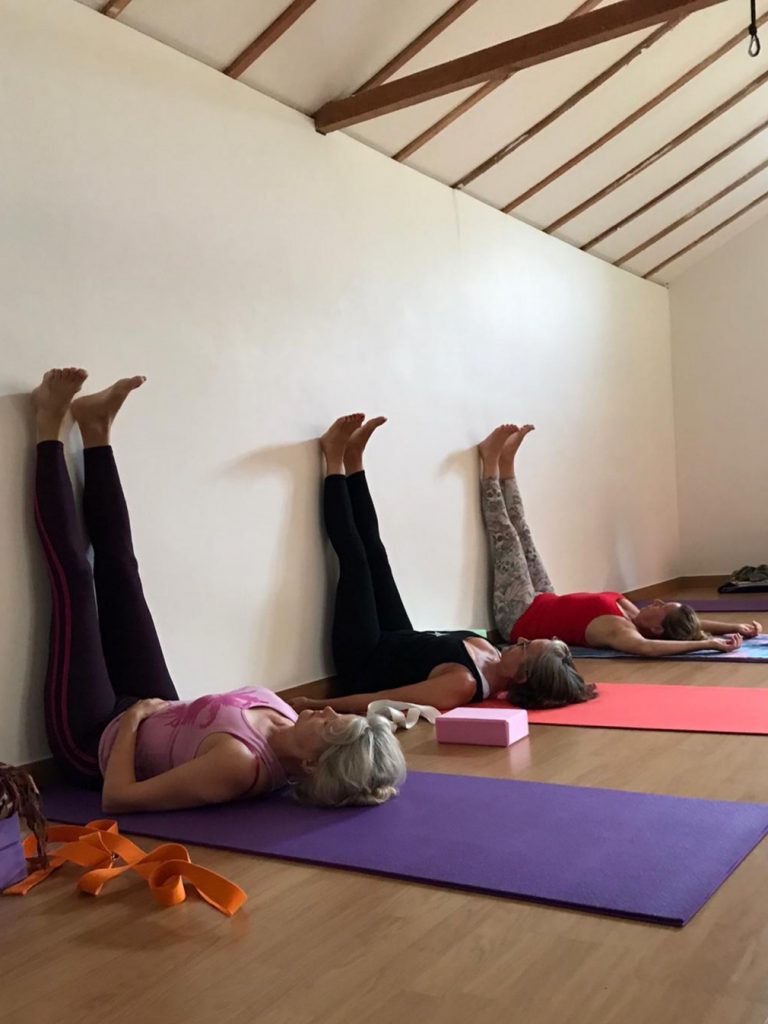We know it’s bad. But what to do about it?
Sometimes (at least, in normal times) we may be able to do something about the causes of our stress, such as work (or lack of it), other people’s problematic behaviour or our own expectations and habits – even if doing something about them can also be hard. Sometimes it may be impossible to change the situation, at least for the time being. In either case, yoga can help and here is an outline of how:
Ahimsa and Santosha
Yoga is traditionally conceived of as having eight ‘limbs’, the first two of these being the Yamas and Niyamas, which are ethical principles and guidance to living well. I haven’t time to go into depth here but recommend if you are interested in yoga that you read up on them. As Donna Farhi wisely says in her book Yoga Mind Body and Spirit: a return to wholeness, the eight limbs of yoga are traditionally presented as a hierarchical progression, but this tends to reinforce the idea of yoga as something to ‘’get’’ (p.6). It might be better to think of them as interconnected, like the limbs of the body. But if you want to start at the beginning, Ahimsa, or compassion for all living things, which is the first of the Yamas, must surely be a good place whether or not you practise yoga. This compassion, or non-violence, must include how we treat ourselves. We need to take time to understand our needs and wants, worries and hurts, acknowledging our feelings without immediately rushing to judgment or condemnation. We should also be able to look at our physical selves, our bodies, without feeling shame or disgust or being defensive. A lot of stress comes from within; we are constantly telling ourselves we are not good enough in one way or another. Perhaps this is because others have made us feel this way, but why join in with the bullying? Why not ask ourselves how we can make our lives better? Then we can extend this kindness to others.
Santosha, (a Niyama), also seems highly relevant to stress. It is contentment, the ability to accept things as they are. It’s not the same as happiness, but when good things happen it will make it easier to recognise them and to feel happy, and it is not complacency – there are things we may wish or need to change about ourselves and our lives, when we are able to do so – but it is finding the place within yourself which is free from stress, which you can return to and draw strength from as you build resilience.

The Asanas
The Asanas (postures or poses) are the third limb of yoga, and what people generally mean when they talk about yoga practice. They may not be the whole story, but they are vitally important because yoga is not just about the mind or the body or the spirit, but all these things. You cannot ignore the body, any more than you can ignore your thoughts or feelings, without consequences. As someone (I’m afraid I forget who) put it, practising yoga is the only time their mind and body truly work together. Too often we stop listening to our bodies, spend hours staring at screens because we have to for work and then choose to do so for entertainment. Our poor bodies carry our stress, and if it goes untreated the tension can become pain – headaches, stiff shoulders, poor posture leading to chronic back pain, stomach and gut disorders may often have their origins in stress that has been allowed to go unchecked. If we listen to our bodies and work with them we can start to heal.
Other forms of exercise may also be good for relieving stress (and being out in the open air is always beneficial as long as you can avoid busy roads) but probably none offer the same degree of complexity and subtlety as yoga. Each asana has variations and adaptations (which are continuing to evolve), different ways of coming into it and moving on to the next. The goal isn’t to perfect any one ‘pose’ (although it is satisfying when you can do something you couldn’t before!) but to explore, try things out, restore the usually distracted mind and the often under-used body so they can work in harmony. If the body or parts of the body are over-worked by some form of exercise, leading to tightness and even pain, yoga will also help you find a more balanced way of moving, allowing tense muscles to stretch and increasing flexibility and resilience, making injury less likely in future. More and more top athletes are turning to yoga to improve their performance and allow them to compete for longer.



